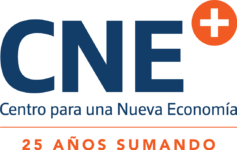A Year Marked by Fiscal Progress and Economic Uncertainty
Published on December 18, 2022 / Leer en español
This year is ending with a balance of fiscal progress and economic uncertainty. In the fiscal arena, the most important news was the implementation of the central government’s Plan of Adjustment (“POA”) on March 15. The POA cut debt by 50%, a significant amount indeed, and eliminated the annual fluctuation in debt service.
Equally important is the completion of the Title III process that changes the narrative about Puerto Rico from one emphasizing a bankrupt government to one that highlights the stability of public finances. It would be premature, however, to conclude that the POA has achieved its objectives successfully since it has only been in effect for nine months, less than a full budget cycle.
The pending debt restructuring is that of the Puerto Rico Electric Power Authority (“PREPA”). Part of the problem with that negotiation is that the parties have diametrically opposed positions on the scope of the lien that the bondholders claim to have on PREPA’s revenues and the legal remedies that the bondholders are requesting. These are matters of law that will eventually be adjudicated by the court. What is clear is that any settlement with PREPA’s creditors will lead to an increase in the electricity bill for consumers. PREPA has not serviced its debt for more than five years. Therefore, even if that debt is reduced by a significant amount, debt service will have to be added to consumer bills. This will lead to increases, unless PREPA manages to reduce other costs by an amount equal to the annual payment due on the renegotiated debt. We very much doubt that PREPA will be able to achieve such cost reductions.
In terms of the real economy, the Planning Board indicates that Puerto Rico’s economy grew 1.0%, at constant prices, during 2021. That is certainly good news after so many years of contraction. A large part of that growth is due to an increase in federal transfers to Puerto Rico for the reconstruction. According to an analysis by Juan Castañer of Estudios Técnicos, net federal transfers to Puerto Rico (after subtracting payments made by Puerto Ricans) increased from $16.453 billion in 2017 to $21.294 billion in 2021, an increase of $4.841 billion, or 29%.
It seems, then, that the reconstruction of the real capital stock destroyed by natural phenomena is what is driving economic activity on the island. It is foreseeable that this pattern will continue for the duration of the reconstruction. According to figures released by COR3, out of a total of $73.640 billion allocated to address the damage caused by Irma, Maria and the earthquakes, only $21.442 billion, or 29%, has been spent. Therefore, an increase in that spending over the next few years will have a positive impact on the economy. What we do not yet know is (1) whether that spending will be made according to current projections and (2) what will happen to our economy once those non-recurring funds are depleted.
The lack of certitude regarding the reconstruction is just one of the sources of uncertainty that characterize the economic outlook. In the short term, inflationary pressures dominate economic headlines throughout the world. Rising prices are a consequence of the economic effects caused by the pandemic, the public policies implemented to address those economic effects, especially the massive injection of liquidity into the global financial system during 2020 and 2021, and Russia’s invasion of Ukraine.
Central banks have responded by raising interest rates. As rates increase, demand for credit decreases because car loans, mortgages and credit card balances become more expensive. In addition, some new investments in machinery, equipment and construction may not be financially feasible given the rising cost of capital. The risk is that the dramatic rise in interest rates will produce a recession in advanced economies in 2023.
Geopolitical changes are the other major source of uncertainty. The war in Ukraine has affected the prices of natural gas, oil, and food products. In addition, the apparent convergence of the geopolitical interests of Russia, China and Iran have generated a robust response from Western powers. NATO has been strengthened and has two new members. The United States has also taken the lead in strengthening other alliances, participating in the Quadrilateral Security Dialogue with Australia, India, and Japan; in a trilateral pact with Australia and the United Kingdom (“AUKUS”); and in the I2U2 grouping, which includes India, Israel, and the United Arab Emirates. The main risk is that the world will again be divided into rival blocs as it was during the Cold War.
The economic effects of these geopolitical events are already being felt in the global economy. The European Union and the United States have concluded that the benefits of economic integration and interdependence have been reduced relative to the national security risks of dependence on strategic rivals. Europe is seeking to diversify its energy suppliers to reduce its dependence on Russia, while U.S. multinational companies are reducing their operations in China to diversify, regionalize, and relocate their supply chains. These changes in global production patterns represent an opportunity for Puerto Rico to attract new foreign direct investment.
In short, Puerto Rico is at an economic inflection point. The convergence of the end of the government’s bankruptcy process, the Biden administration’s support for the reconstruction, and the stabilization of economic activity after the pandemic has created an opportunity for Puerto Rico to get its economy back on track. On the other hand, there are certainly substantial risks. Inflation is at its highest level in forty years. Fuel and energy costs have skyrocketed due to the Russian invasion of Ukraine. And rising interest rates will tighten credit and slow down growth.
Our net assessment, however, is that the upside factors currently outweigh the downside risks, primarily due to projected federal investment in infrastructure. But that investment is not entirely within our control and it is not recurrent. It is imperative, then, that Puerto Rico begin to design a medium- and long-term economic growth strategy for 2023.
The Spanish language version of this column was originally published in El Nuevo Día on December 18, 2022.

